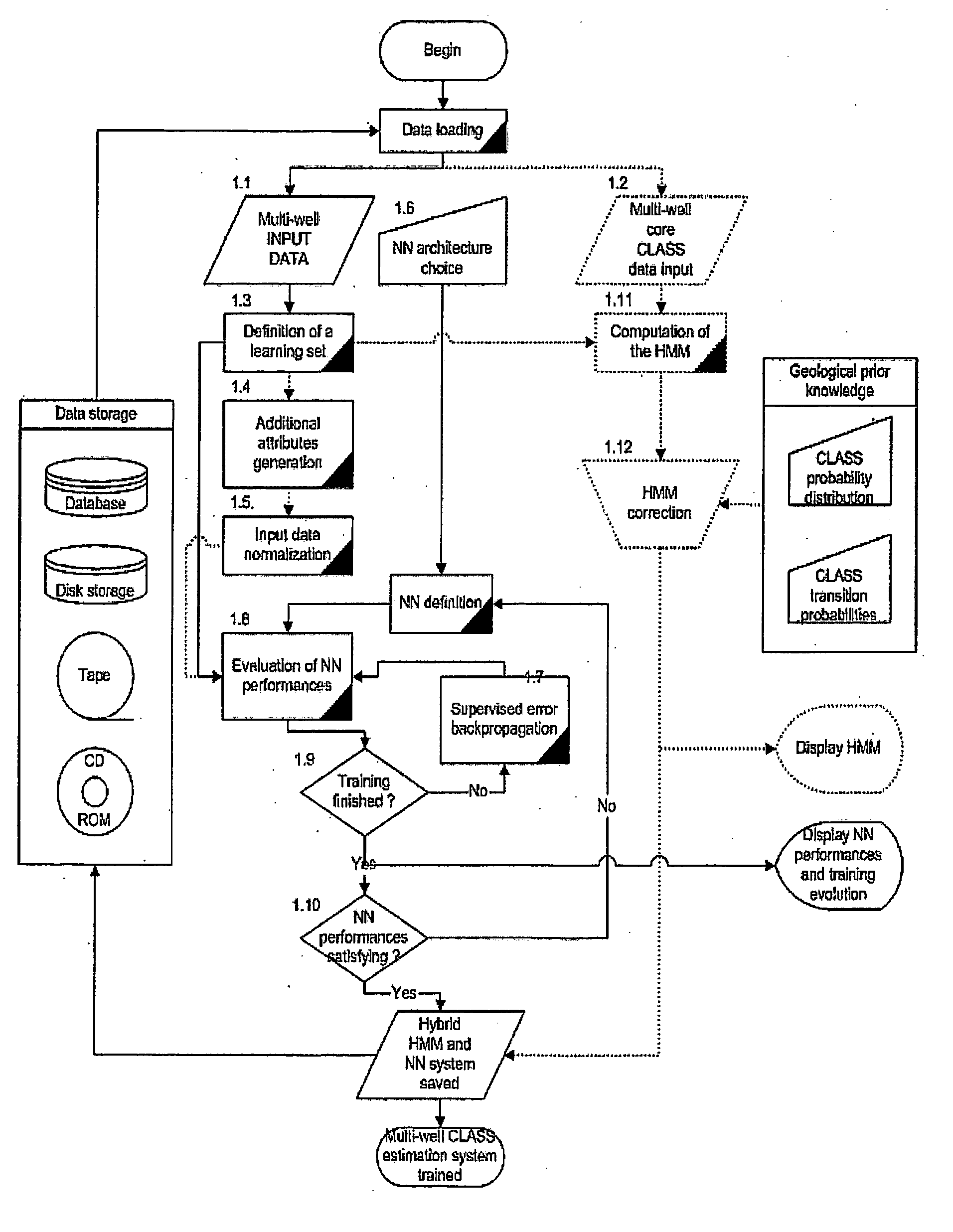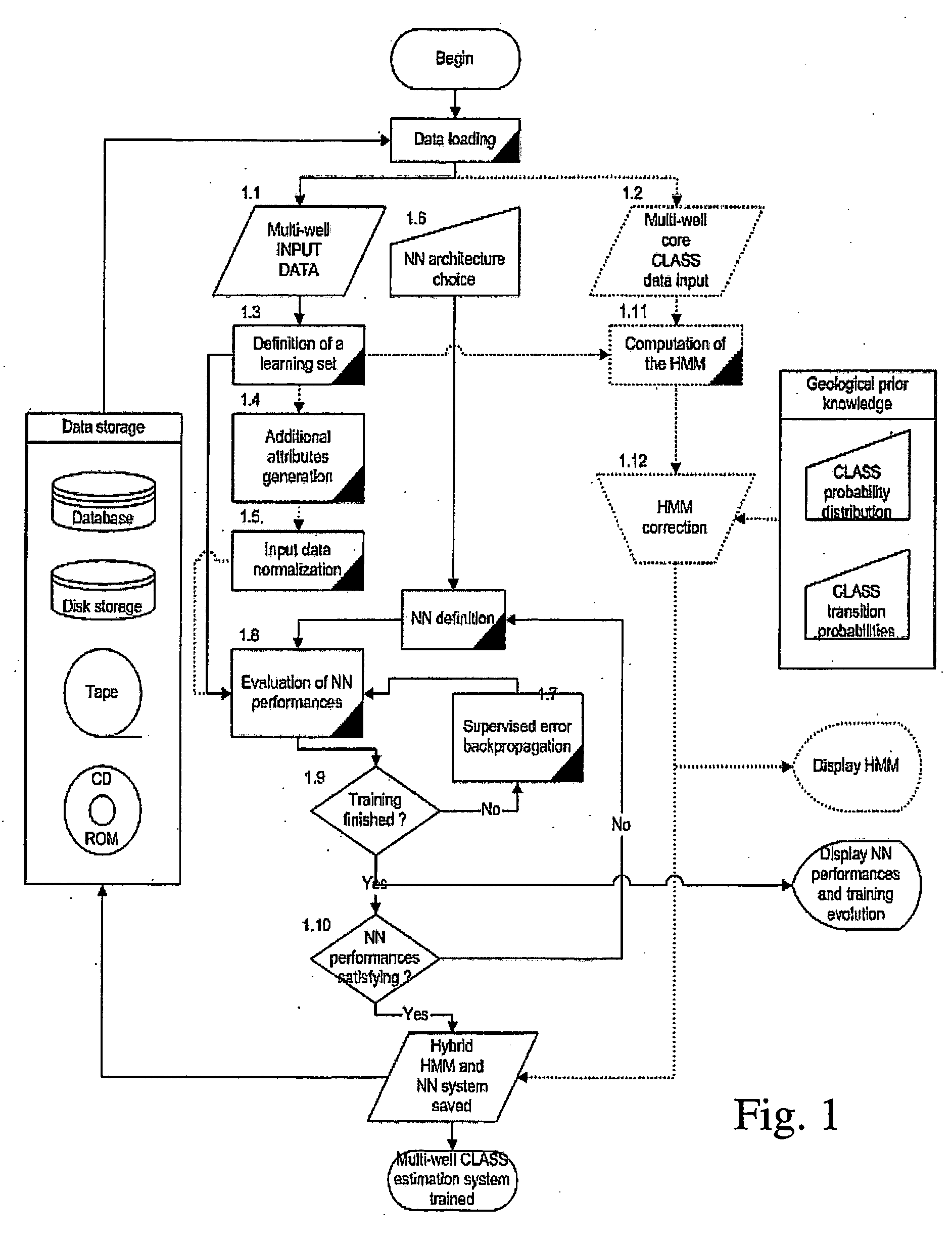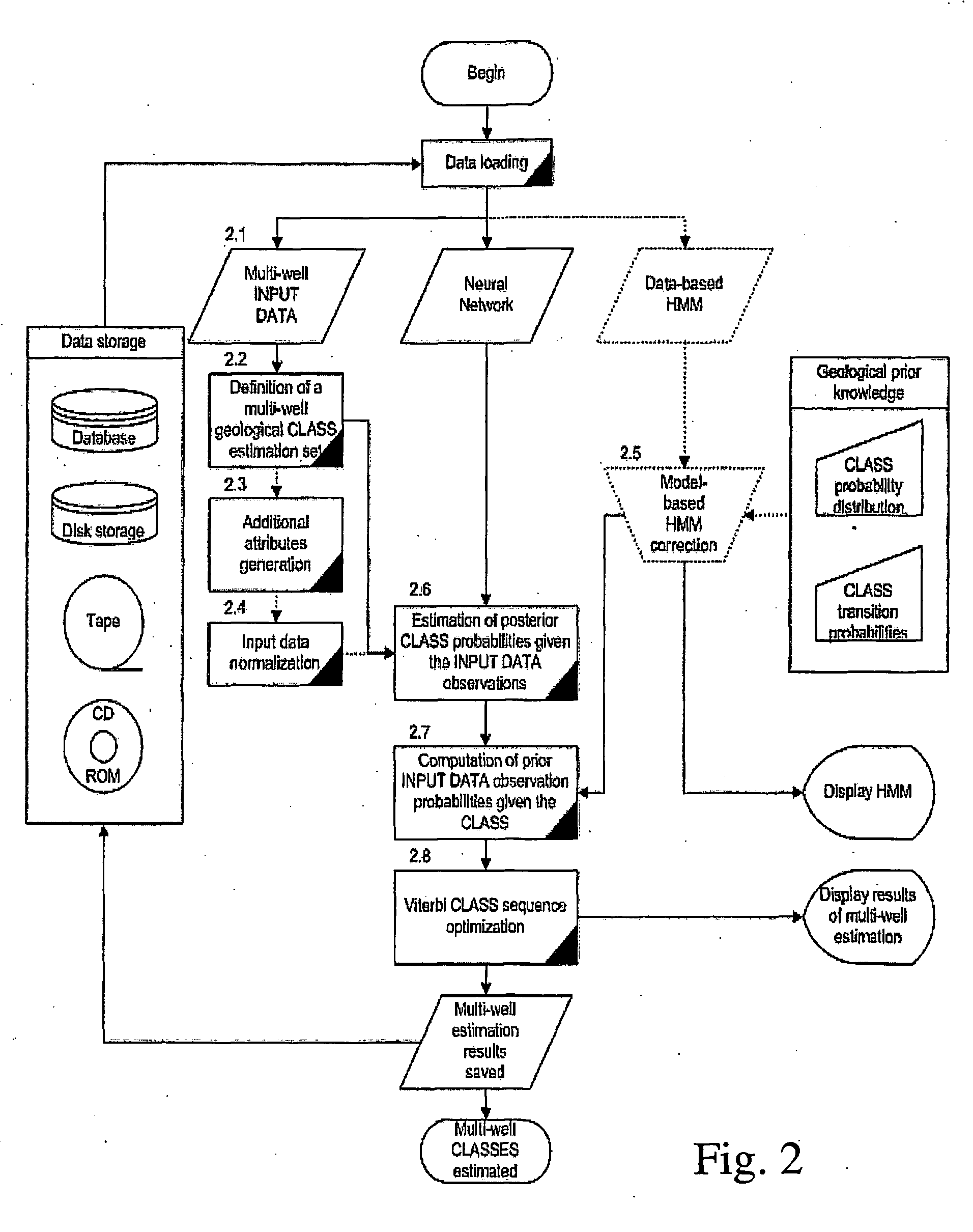System and method for inferring geological classes
- Summary
- Abstract
- Description
- Claims
- Application Information
AI Technical Summary
Benefits of technology
Problems solved by technology
Method used
Image
Examples
Embodiment Construction
[0048] The Hybrid ANN / HMM of an example of the invention is composed of two different components, which are the ANN posterior CLASS probability estimator, and the HMM, comprising only a CLASS transition table and a CLASS probability distribution. In the present example those components are trained separately during the training phase of the system, as they do not need to interfere with one another during the learning step. They are also applied separately during the estimation step.
[0049] In the following single steps and components of the example of the invention are described in greater details making reference to FIG. 1 to 5.
1. Data Choice and Input
[0050] Processing of the INPUT DATA is done on a sample-by-sample basis, and therefore the CLASS probabilities are estimated for each sample.
[0051]1.1. Borehole Choice (See Step 1.1 to 1.3 on FIG. 1 and 2.2 on FIG. 2)
[0052] Both the learning and the estimation of the Hybrid HMM / ANN classification system can be done on several well...
PUM
 Login to View More
Login to View More Abstract
Description
Claims
Application Information
 Login to View More
Login to View More - R&D
- Intellectual Property
- Life Sciences
- Materials
- Tech Scout
- Unparalleled Data Quality
- Higher Quality Content
- 60% Fewer Hallucinations
Browse by: Latest US Patents, China's latest patents, Technical Efficacy Thesaurus, Application Domain, Technology Topic, Popular Technical Reports.
© 2025 PatSnap. All rights reserved.Legal|Privacy policy|Modern Slavery Act Transparency Statement|Sitemap|About US| Contact US: help@patsnap.com



